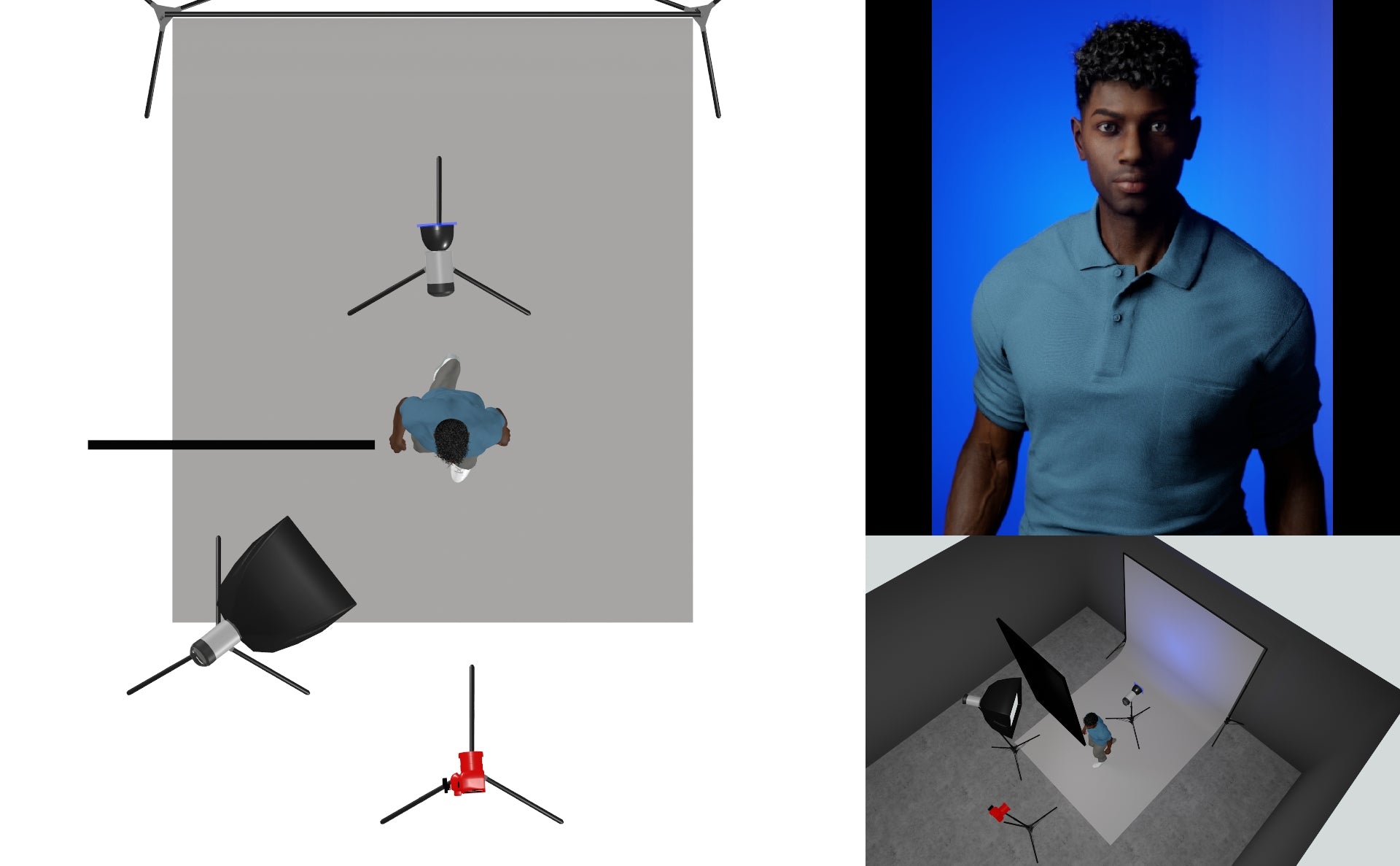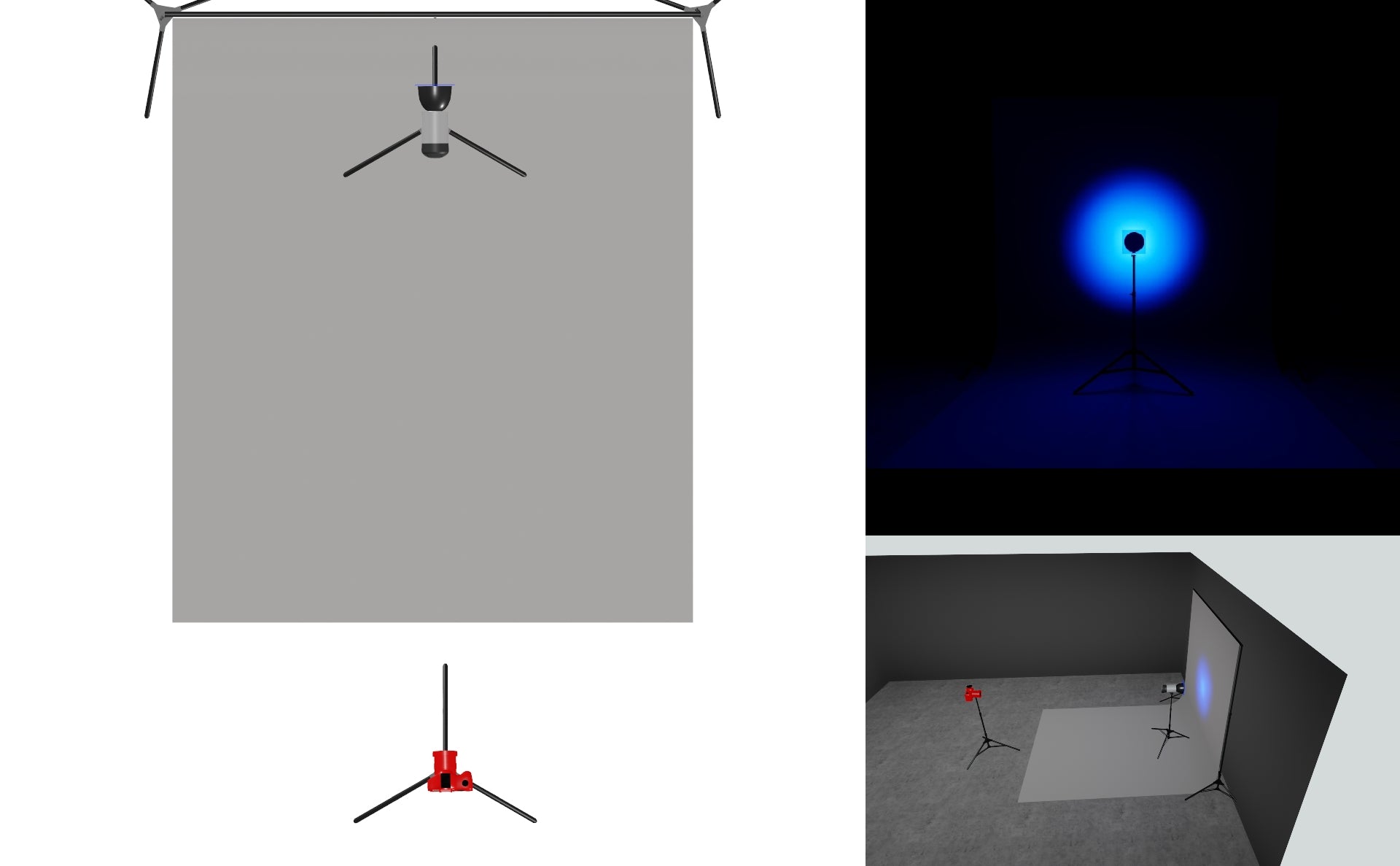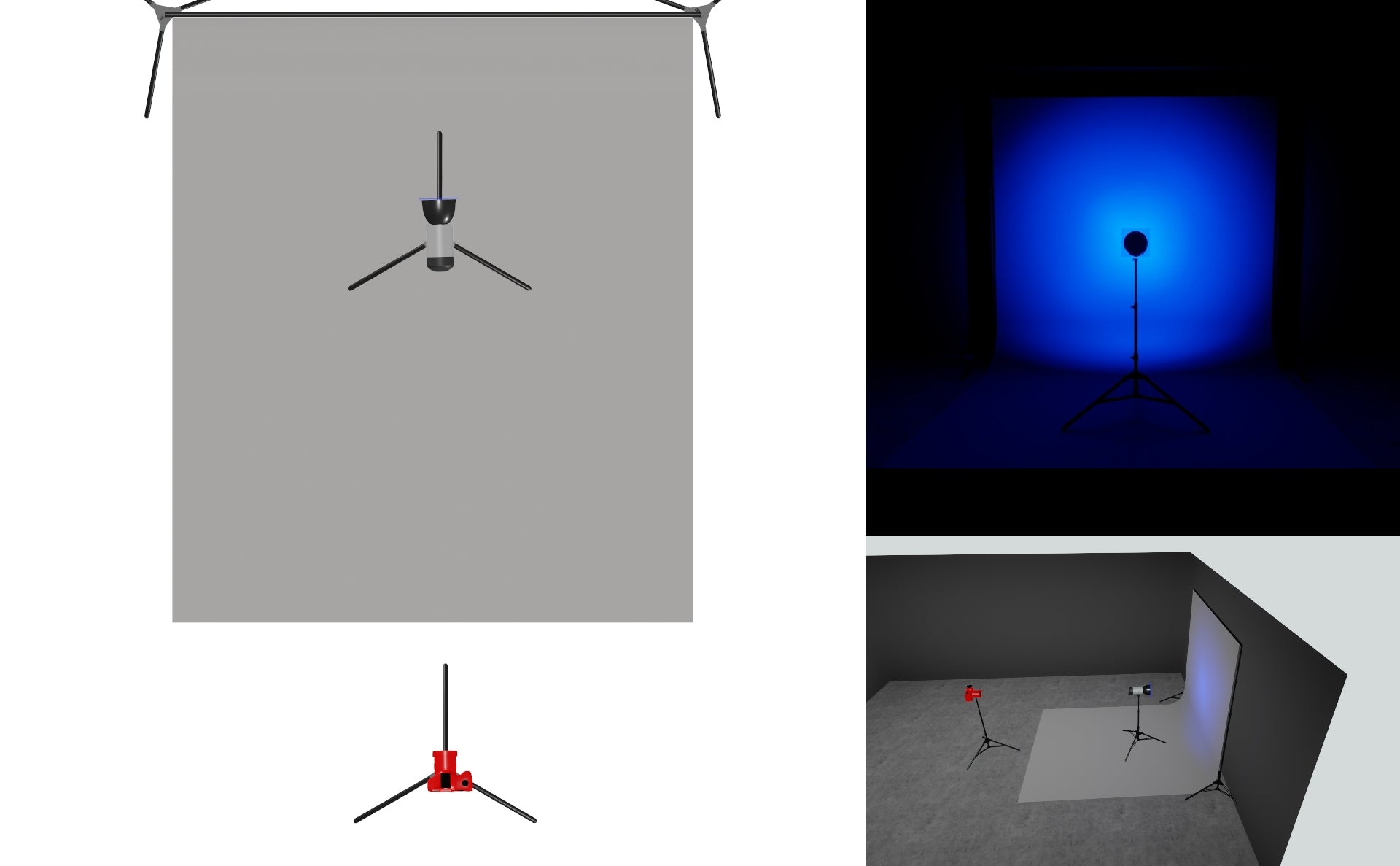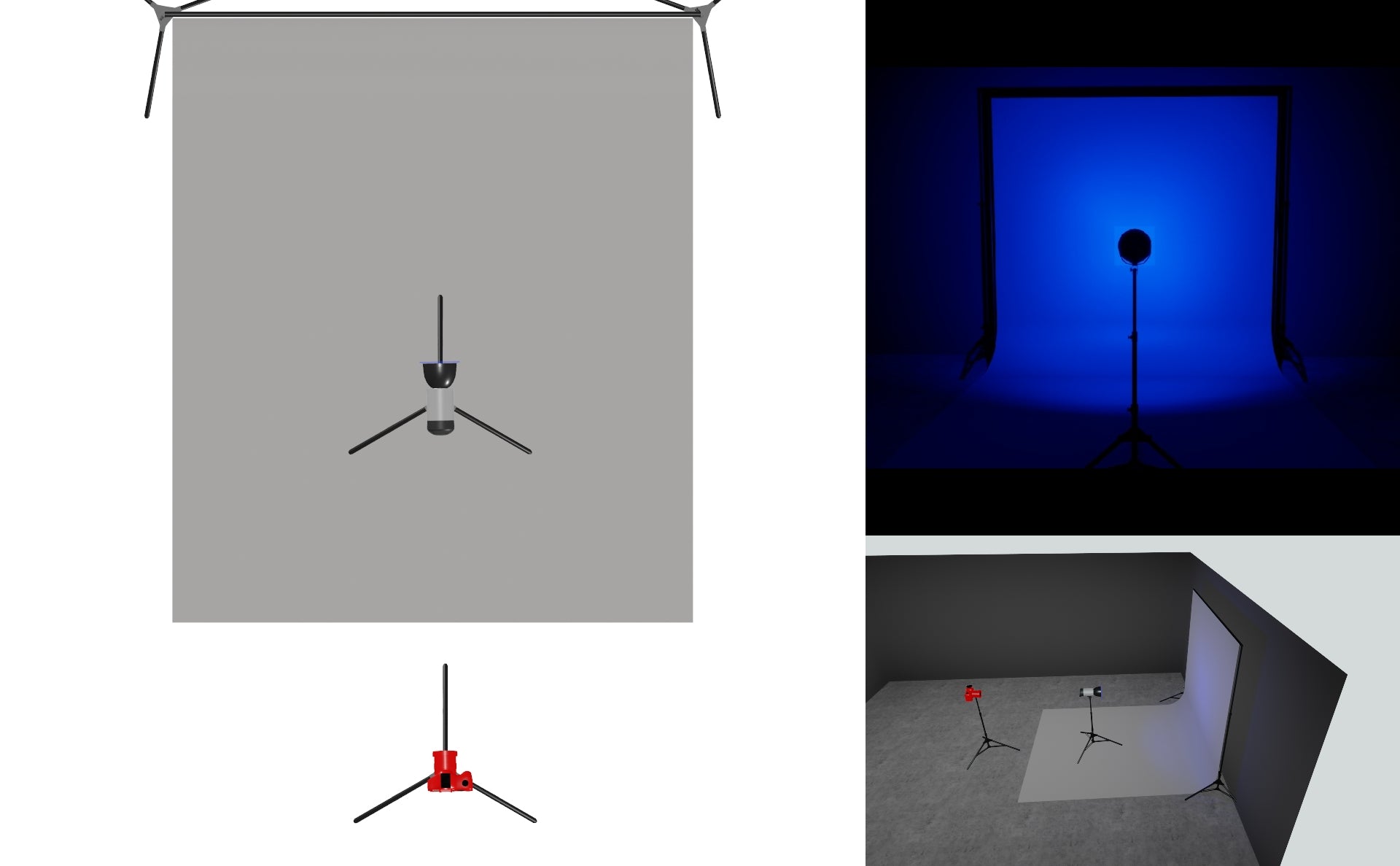Video above: A Godox SZ150R RGB Monolight LED was used to change the colour of the backdrop
Let's Get Started with RGB Lighting
In this article, Conrad will delve into the exciting world of using RGB lighting and colour gels, also known as colour filters, to transform a plain white backdrop into a vibrant canvas of colours. This technique allows you to inject a splash of colour into your scene, enhancing it with added interest, contrast, and mood.
Whether you're looking to enhance your photography, create captivating live broadcasts, conduct engaging online video meetings, or produce eye-catching tutorials, this method enables you to incorporate the colours of your branding seamlessly into the scene. Join us as we explore the creative possibilities and learn how to bring your vision to life with the dynamic combination of RGB lighting and colour gels.
Using RGB Lighting
In this setup, a Neewer 660 Pro RGB light is placed behind the subject, specifically aimed at the backdrop. It is crucial to position the light in a way that it remains unseen in the final shot.
Next, we introduce a key or main light, which in this case is the Godox SL60 with a soft translucent umbrella, to illuminate our subject. However, it is worth noting that there might be light spillage from the main light onto the backdrop. This can result in a reduction of vibrancy and depth in the color, potentially diluting the intended impact.
To address this issue, light blockers, also referred to as "flags," can be employed. These flags act as barriers to block the spillage of light from the main light source onto the backdrop. By strategically placing these blockers, you can prevent unwanted light from washing out the colors and maintain the desired vibrancy and richness.
The use of light blockers allows for precise control over the lighting setup, ensuring that the subject is appropriately illuminated while preserving the vividness and depth of the backdrop's colors. By employing these techniques, you can achieve a visually striking composition where the subject remains the focal point, and the backdrop enhances the overall aesthetic appeal.
In the video above, one can notice that once the main light is switched on, the colour on the backdrop washes out. A light blocker was used to create a shadow onto the backdrop, thus preserving the richness of the colour.
To minimize light spillage, another effective approach is to utilize light modifiers specifically designed to produce a concentrated beam of light. One such modifier is a gridded softbox. These softboxes incorporate a grid or honeycomb structure that helps control the spread of light, directing it more precisely towards the subject while minimizing spillage onto the surrounding areas.
By attaching a gridded softbox to your main light source, you can achieve a more focused and controlled lighting effect, enhancing the overall impact of your subject while reducing unwanted light spillage.

Image above: Softbox is used with the main light. No grid is added, however. we Can see how fairly washed out the colour is on the backdrop due to the amount of light spillage from the man light

Image above: A grid is added to the softbox. Thus, providing a more focused light on our subject. The colour on the backdrop is now a little bit more vibrant

Image above: A light blocker is used to prevent light spillage onto the backdrop. Giving us a far richer and more vibrant colour on the backdrop
Using Gels (Colour Filters)
By utilizing high-quality gels from reputable brands like Lee Filters or Neewer, you can effectively alter the color of your light source. It is crucial to use filters specifically designed for this purpose to achieve optimal results.
Using cellophane paper as a substitute may not provide the desired richness of color or even distribution of light. Additionally, under intense lighting conditions, cellophane paper runs the risk of melting, which can compromise the safety of the setup.
Therefore, it is recommended to invest in high-quality gels to ensure the best color transformation and reliable performance during your lighting experiments.
Positioning of the Back Light
The distance between the backdrop light and the backdrop itself plays a significant role in determining the spread of light. Placing the light source closer to the backdrop will result in a more pronounced "hotspot" effect, where the light is concentrated in a specific area.
To achieve a more even spread of light, it is necessary to provide sufficient distance between the backdrop light and the backdrop. By pulling the light away from the backdrop, you allow it to spread and disperse more evenly across the entire backdrop surface. Adjust the distance until you achieve the desired lighting effects and the desired level of uniformity in the light distribution.



In Summary
In conclusion, utilizing RGB lighting and color gels opens up a world of creative possibilities for transforming a plain white backdrop into a vibrant canvas of colours.
By strategically positioning the lights, employing light blockers to prevent spillage, and using gridded softboxes to control light spread, you can achieve a visually striking composition where the subject remains the focal point, while the backdrop enhances the overall aesthetic appeal.
Additionally, using high-quality gels ensures optimal color transformation, while careful positioning of the backdrop light allows for the desired spread of light. With these techniques, you can bring your vision to life and inject a splash of color into your photography, live broadcasts, online video meetings, or tutorials.




